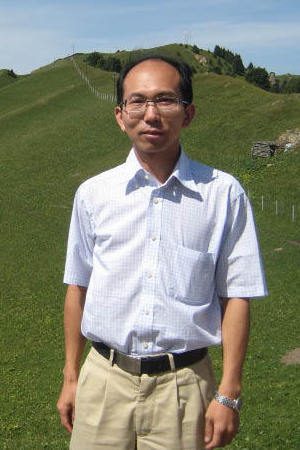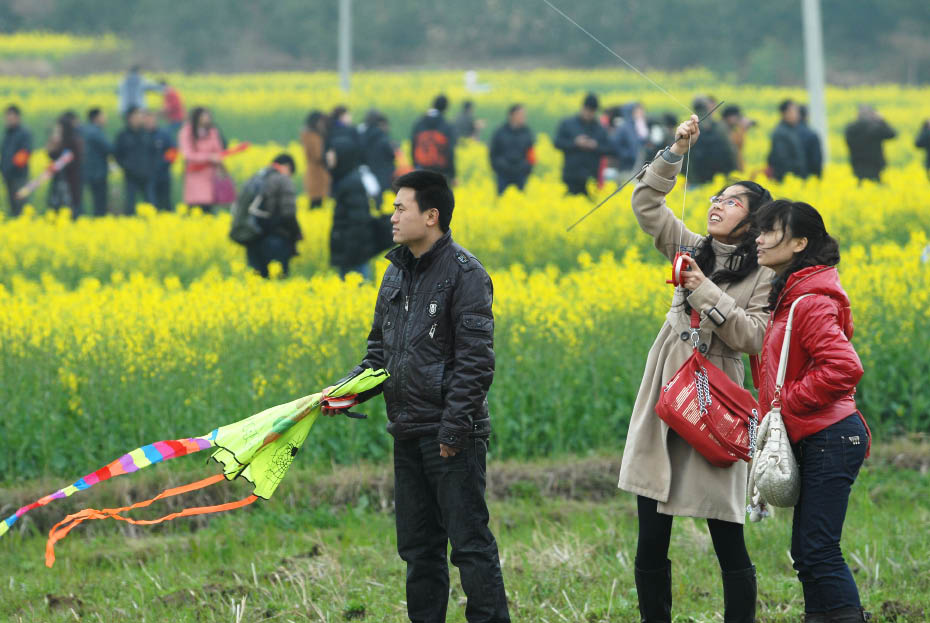Deepening Reforms to Accelerate the Construction of a Moderately Prosperous Society

By HU JIANGYUN
CHINESE leaders reiterated the goal of building a moderately prosperous society at the 18th CPC National Congress in November, 2012.
At the very onset of China’s opening-up and reform, the Chinese government set the goal of common prosperity for the people. Under the economic and social circumstances of that time, China, nevertheless, wisely accepted the reality that it had to allow part of the population to get rich first, and introduced reforms in the coastal areas before promoting them nationwide.
As opening-up and reform advanced, some in China have become well-heeled, but many have not. Common prosperity is the ultimate goal and common hope of the general public.
For the first time, the concept of building a moderately prosperous society “in all respects” was unveiled at the 18th CPC National Congress. This refers to five realms – economy, politics, society, culture and ecology.
First, the economy must maintain sustained and sound development. China envisions a doubled GDP and per capita income by 2020 on the 2010 basis. Second, people’s democracy must be expanded. The institutions of democracy should be improved and its forms enriched. People’s enthusiasm, initiative and creativity should be fully leveraged, and human rights fully respected and protected. Third, the country’s cultural soft power must be improved significantly. More cultural works should be created, a system of public cultural services basically put in place, and the cultural sector made a pillar of the economy. Fourth, living standards must be raised. Equal access to basic public services should be generally achieved. The educational level of the entire population must be significantly raised and training of innovative professionals markedly improved. Social security should cover all people, and there should be social harmony and stability. Fifth, major progress must be made in building a resource-conserving and environmentally friendly society. The establishment of functional zones should be basically completed, and a system for recycling resources begin to take shape. The ecosystem must become more stable, and marked improvements made to the living environment.
 |
| Residents of Zhijiang in Hubei Province went for family outings in the city’s suburbs to see rape blossoms in March, 2011. |
The realization of these ambitions requires deepening reforms across the board. The experiences of the past 30-plus years show that opening-up and reform offers the solution for problems ranging from social development, economic growth and national solidarity to ecological balance. Whenever its economic, social, political, cultural or ecological development comes to crossroads, the Chinese government falls back on this tried and tested national policy.
China’s development has not been plain sailing. It has gone through swings and at times losses. In his 1992 inspection tour of southern provinces, Deng Xiaoping articulated that China should stick to the path of opening-up and reform, a decision that led to the nation’s sustained and sound development in the following years.
In the new century China has stepped up the pace of integrating itself with the world. Its admission to the WTO ushered in a new round of rapid growth, and has promoted global cooperation to new heights, injecting life into the domestic economy and cementing its regional and international clout.
In the course of wider opening and deepening reforms China has to overcome many unpredictable difficulties and challenges to achieve the goal of building a moderately prosperous society. Domestically these include various imbalances that are growing more salient, such as a widening wealth gap, corruption and abuse of public power. Internationally China faces uncertainties in its territorial conflicts in the East China Sea and South China Sea as well as a drift towards trade protectionism. The solution to all these problems lies in the wisdom and strength gained in the process of development through opening-up and reform.
A moderately prosperous country of 1.3 billion people can do more for the world, in particular its economy. China is now the world’s second largest economy and its foreign trade volume is also the second largest globally. Though in terms of per capita income China has yet to make it into the top 100, its significance to and role in world economy cannot be underestimated.
Since the onset of the financial crisis China has been watched closely by the rest of the world and recognized as a leading engine in the sputtering world economy. The affirmative policies and actions introduced by the Chinese government have buttressed world confidence amid an economic slowdown not seen for decades, winning plaudits for their efficacy.
The world is also keeping an eye on China’s opening-up and reform, which oils international economic recovery and lends strength to global stability and prosperity.

